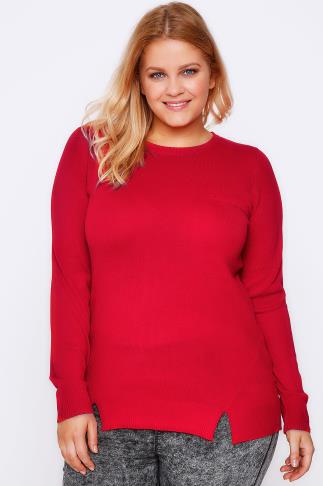



Using the FIFO method, they would look at how much each item cost them to produce. Since only 100 items cost them $50.00, the remaining 5 will have to use the higher $55.00 cost number in order to achieve an accurate total. Most businesses use the first-in first-out method of allocating costs to inventory, which assumes the inventory stock that you purchased first is sold first. There are three ways to determine the value of your inventory — FIFO, LIFO and weighted average cost. The method chosen influences your cost of goods sold and it is important to stick to one method because it will impact everything from budgeting to reordering inventory.

In the retail business, your goal is not only to generate revenue and profit but also to keep track of and manage your inventory. We all know how to import inventory management and what’s its contribution towards healthy and optimum business operations. In this blog, we will learn all about inventory valuation and accounting principles.
The amount of income taxes paid can vary depending on the cost-flow method selected. In order to lower income taxes paid during periods of rising prices, the LIFO approach is frequently utilised. Factory overhead- All costs incurred during the manufacturing process aside from direct labor and direct supplies are referred to as factory overhead.

Another benefit is its simplicity because the costs match the actual cash flow and the physical flow of goods across the warehouse. Inverge is a platform with the solutions to unlock your business’ potential and the power to scale with you. If you’re ready to see how we customize to your unique retail needs, enter your email for immediate access to a short walkthrough. Inventory management can be as complicated or straightforward as you need to make it. One thing is clear, though; inventory will give you a vitally important picture of the health of your business. There are three main methods for calculating the cost – LIFO, AVCO and FIFO.
During times of inflation, LIFO results in higher COGS and a lower balance of remaining inventory. If COGS are higher and profits are lower, businesses will pay less in taxes. FIFO can be inaccurate when the cost to make the product increases significantly. If product costs triple but accountants use values from months or years back, profits will take a hit. Inventory valuation is the calculation of how much your inventory is worth at the end of a financial year or accounting phase.
One more valid reason is that on using FIFO, the amount of closing stock in the balance sheet will be higher in comparison to FIFO. With FIFO, your inventory stock is valued at the most current price and can better reflect ending inventory and actual which method assumes that last item in stock marketplace costs. The method is not fool-proof, and the actual flow of inventory may not align to this first-in, first-out pattern. Milagro buys 80 additional units on March 25, and sells 120 units between March 25 and the end of the month.
Below, we’ve taken a look at the more common inventory management techniques and rounded up some stock control tips to help you get started. It may also give you a more accurate costing method than the retail method—which doesn’t compensate for discounts or differing margins across SKUs. The retail method provides the ending inventory balance for a store by measuring the cost of inventory relative to the price of the goods.
It’s so often one of the biggest costs, while also being the primary source of business income. Part of the year-end process is to complete a stock check; this will be done on the last day of the accounting period. It will ensure that the figures in the accounts are the same as the actual quantity held.
In essence, it determines how much expense to recognize this period versus the next period. The retail method provides the ending inventory balance for a store by measuring inventory cost relative to the price of goods. It determines how much expense should be recognized in this period versus the next.
If the prices of goods you buy don’t change too much, a more straightforward method is Weighted Average Costing. The main benefit of LIFO is that it results in a higher cost of goods sold, which means you may reduce your tax liability. It’s always important to check with an accountant or tax advisor before making any decisions.
In these circumstances, an assumed first-in, first-out move corresponds with the actual bodily flow of products. The EOQ method inputs make an assumption that consumer demand is fixed. The calculation also assumes that each ordering and holding prices stay fixed.
Current LiabilitiesCurrent Liabilities are the payables which are likely to settled within twelve months of reporting. They’re usually salaries payable, expense payable, short term loans etc. If prices are decreasing, then the complete opposite of the above is true. Shipping ManagementGet to know A-to-Z about shipping including its types, important terms, and costs.
The system you choose can have profound effects on your taxes, income, logistics and profitability. Learn how both methods work and the major differences between them; then consult your CPA or tax attorney to determine the best method for your business. Abir found that profits would increase in this inventory management system since you’re selling items at their current market value rather than when they were purchased. An accountant or the person responsible for your company’s financial records should be calculating ending inventory. This process requires the accuracy of all data inputs at many levels of the business — from physical inventory stock counts to accurate sales and purchase data.
The FIFO flow concept is a logical one for a business to follow, since selling off the oldest goods first reduces the risk of inventory obsolescence. When accounting for stock, most businesses will use the first-in, first-out or average cost method. The FIFO method assumes that the first item purchased is the first item to be sold . The AVCO method uses the average cost of the stock brought forward.
When the promise of sale is made, the object must also be easily tracked down, located, and accessible. Profits appear inflated even when regular inflation is assumed, which results in a heavier tax burden when compared to alternative approaches. No accounting regulations can benefit the company because it is so impossible to alter them. Businesses with outmoded inventory tend to choose the market or cost rule since it is less expensive.
Also, because a high amount of data is required to extract the cost of goods, clerical errors may occur. When balancing your beginning inventory and ending inventory, FIFIO can confuse profit results due to change in economic periods. If you buy a single product with one universal code but purchase it in different batches, tracking each batch’s cost over time is more complicated. The disadvantage is that it’s inaccurate if prices fluctuate too much or if you have products with different markups. Knowing how much stock is being sold or lost each day, month and year through frequent cycle counting and accurate inventory management records can help you maintain a healthy bottom line.
The First in First Out method assumes that the first item purchased is the first item to be sold . This is because the prices of goods purchased may change all the time, and you must make the changes into account. It is one of the vital reasons company’s prefer LIFO accounting over FIFO.
In FIFO, you assume that the first products purchased will also be the first to depart the warehouse. To put it another way, under FIFO, every time you make a sale, the items are deducted from the first list of goods that arrived at your warehouse or store. Inventory is not intended to be held for an extended period of time because it is a current asset. In particular, the stock turnover ratio needs to be higher than average. The Cost of Goods Sold , when combined with Direct Revenue Earned , will assist you in calculating the Gross Profit.